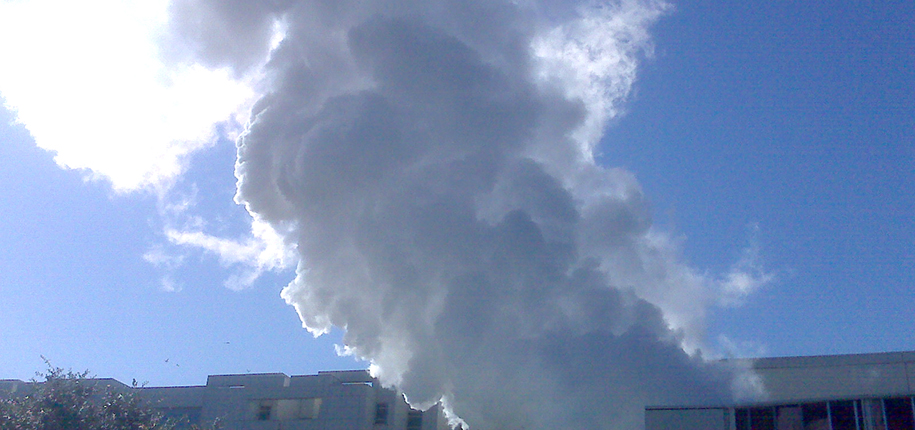
A “quench” to an MRI scanner means something totally different than the normal definition of “satisfying one’s thirst by drinking.” At Cincinnati Children’s, our MRI scanners are basically one big superconducting magnet. From what I’m told, they are even stronger than the magnets used in the metal junkyards that pick up various pieces of metal to be processed. If we were to open an MR machine, we would see several copper coils (superconducting wire) wrapped around the internal mechanism, which makes it an electromagnet. The copper coils help create intense magnetic fields.
When our MRI scanners are up and running, they generate an immense amount of heat from the high electrical current needed to create the magnetic fields. Remember those copper coils? Well, they contain liquid helium that acts as a coolant to keep our MR machine cooled below its critical temperature.

A quench is when helium is quickly released from the MR machine, causing the machine to be non-superconductive and eliminating the magnetic field. Simply put, the machine is not a running magnet anymore.
Quenching an MR machine is performed only in dire circumstances. Quenching could cause damage to the coils, sometimes beyond repair. One MR machine can cost in the millions of dollars. If the safety of the patient or any person in the scan room is in jeopardy and quick action is needed to save their lives, a quench is performed. Another situation where a quench is needed is during a fire so that firefighting personnel can safely enter the room with all their metal equipment.
Below is an example of a controlled quench from YouTube.
Getting the magnet up and running is no simple task. Support engineers from the company that created the scanner must be careful in getting the machine up and running. This could take hours or even days, not to mention the thousands of dollars needed in service and supplies. The average MRI machine utilizes 1,700 liters of helium, and liquid helium’s price can range from $3.25 to $15.00 per liter. At the highest price range, it would cost around $25,500 to fill up an MRI scanner with liquid helium.
Quenching an MRI machine is done only in the event of an emergency, be it patient safety or fire. The cost of servicing a quenched MRI scanner is very expensive. Our highly trained technologist would know what to do if ever a quenching event is needed.